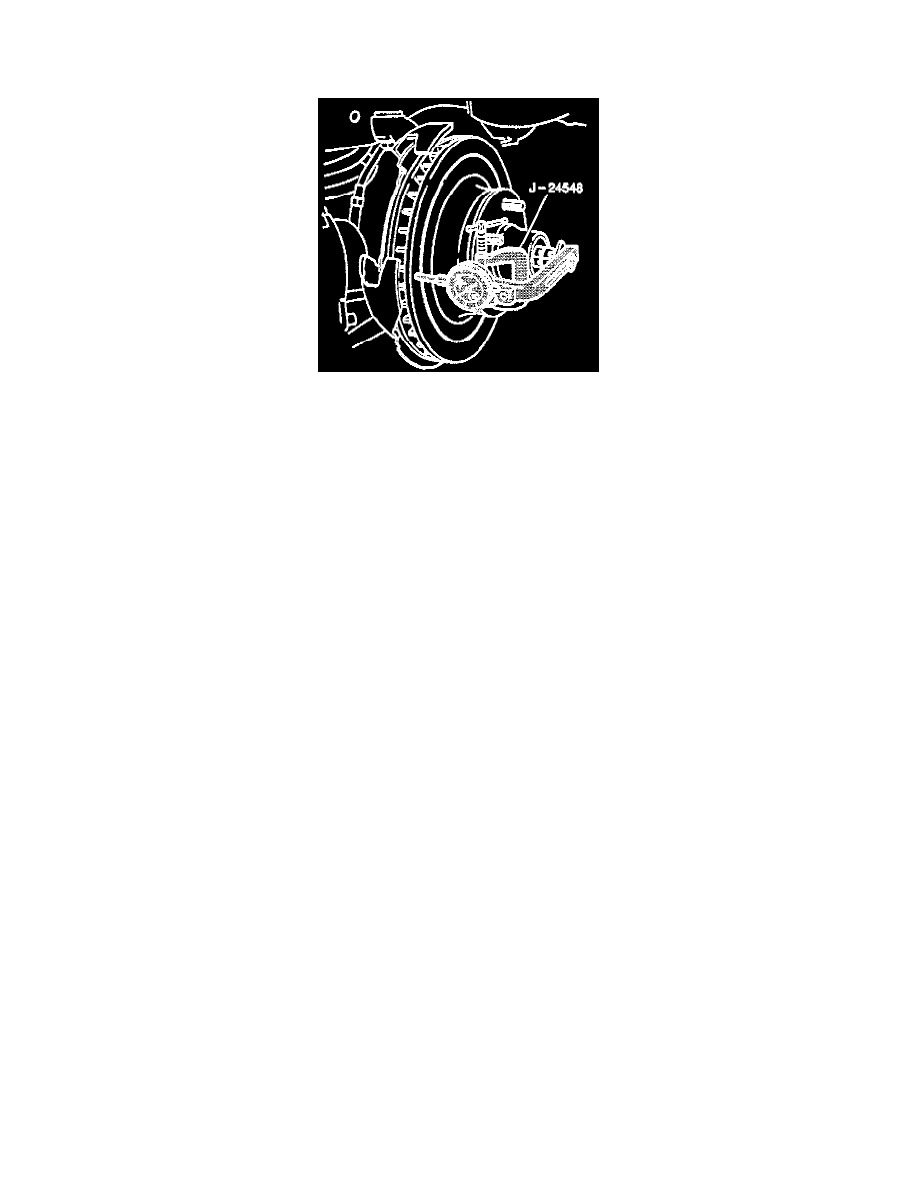G 2500 3/4 Ton Van V8-6.5L DSL Turbo VIN F (1997)

Brake Rotor/Disc: Testing and Inspection
Lateral Runout Check
CHECK WITH WHEELS INSTALLED
The best way to check lateral runout is with the wheels still installed on the vehicle. This gives a much more accurate reading of the Total
Indicated Runout (T.I.R.) under real braking conditions. If equipment is not available to perform the check with the wheels installed, the next best
reading can be made with the wheels removed but the caliper still installed.
NOTE: If the wheel must be removed, reinstall the wheel nuts to retain the rotor. Tighten the wheel nuts to the correct torque specification
following the wheel nut tightening sequence shown in Steering and Suspension. Failure to properly tighten wheel nuts can cause pedal pulsation
and/or front end vibration during brake applications.
Procedure
1. Clean rotor surface.
2. Fasten a dial indicator to the steering. knuckle so the indicator button contacts the rotor surface about 13 mm (0.5 inch) from the outer edge.
3. Set the dial indicator to zero.
4. Turn the wheel one complete revolution and observe the runout indicated on the dial.
5. The T.I.R. must not exceed 0.08 mm (0.003 inch).
6. If lateral runout is not within specifications, refinish or replace the rotor as necessary.
INDEXING ROTOR HUB
In some cases excessive lateral runout can be improved by indexing the rotor on the hub one or two bolt positions from the original position. If
lateral runout cannot be corrected by indexing the rotor, check the hub and bearing assembly for excessive lateral runout or looseness. If the hub
and bearing assembly lateral runout exceeds 0.040 (0.0015 inch), repair or replace hub and bearing assembly.
NOTE: When the brake rotor has been separated from the wheel bearing flange, remove all rust or foreign material from the mating surfaces of
the wheel bearing, flange and rotor. Failure to do so can result in increased lateral runout and brake pulsation.
